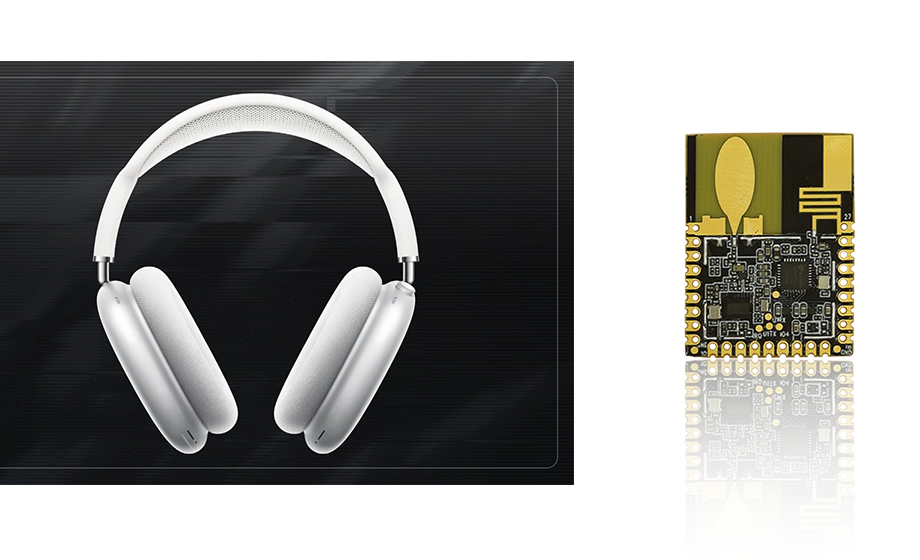I. Introduction
With the rapid development of science and technology, wireless transmission technology has become an indispensable part of modern society. As a new wireless communication technology, ultra wideband (UWB) chip has a wide application prospect in the field of wireless transmission. This paper will deeply discuss the technology development and market application of UWB module of wireless transmission UWB chip manufacturers, in order to provide reference for professionals in related fields.

Two, wireless transmission UWB chip manufacturers ultra broadband module technology development
UWB technology Overview
Ultra-wideband (UWB) is a carrier-free communication technology, which uses non-sinusoidal narrow pulses from nanoseconds to microseconds to transmit data, so it has the advantages of high transmission rate, low power consumption and strong anti-interference ability. As the core component of UWB communication system, UWB chip has a wide application prospect.
UWB chip module technology development trend
With the continuous development of UWB technology, wireless transmission UWB chip manufacturers ultra wideband modules are also constantly improving and optimizing. At present, the development trend of UWB chip technology mainly includes the following aspects:
(1) Improve the transmission rate: With the increasing communication needs, improving the transmission rate is an important direction of the development of UWB chip technology.
(2) Reduce power consumption: For mobile devices, reducing power consumption can improve the battery life of the device, so it is an important development direction of UWB chip technology.
(3) Enhance anti-interference ability: With the continuous increase of wireless communication equipment, anti-interference ability is the key development direction of UWB chip technology.
Third, wireless transmission UWB chip manufacturers ultra wideband module market applications
Smart home field
Smart home is one of the important application fields of UWB chip module. By adding UWB chips to smart home devices, rapid wireless communication between devices can be realized and the intelligence of devices can be improved. For example, UWB technology is used to realize the interconnection of intelligent door locks, intelligent lighting, intelligent security and other equipment to improve the safety and convenience of the home.
Wireless sensor network field
Wireless sensor networks are another important application area. In the field of sensing, it is often necessary to achieve fast wireless communication and data transmission between a large number of devices. UWB chip manufacturers UWB module is very suitable for the construction of wireless sensor networks because of its high-speed transmission and low power consumption. For example, in industrial automation, environmental monitoring, medical and other fields, UWB technology can achieve efficient and stable wireless communication.
Vehicle communication field
With the continuous development of autonomous driving technology, vehicle communication has become one of the important application fields of UWB chip. Using UWB technology, rapid wireless communication between vehicles and between vehicles and between vehicles and road infrastructure can be achieved to improve the safety and efficiency of the traffic system. In addition, UWB technology also has a wide range of application prospects in vehicle entertainment systems, vehicle tracking and monitoring.
Fourth, the challenges and future development of UWB chip manufacturers for wireless transmission UWB module
Challenges faced
Although UWB chip modules have many advantages, in practical applications, there are still some challenges:
(1) Signal attenuation: Due to the characteristics of UWB signal, it may experience strong signal attenuation during transmission. This requires special technical measures to overcome, such as the use of high-gain antennas or signal enhancement.
(2) Compatibility with existing technologies: UWB technology needs to coexist with existing communication systems such as Wi-Fi, Bluetooth, etc. This requires UWB technology to have excellent compatibility in frequency allocation, interference avoidance and so on.
(3) Security: As an emerging wireless communication technology, the security of UWB is also an issue that needs attention. Effective encryption and authentication measures are required to ensure the security of UWB communication.
Future development trend
With the continuous progress of technology, the future wireless transmission UWB chip manufacturers ultra wideband module will have more development and applications:
(1) Higher transmission rate: With the increasing communication needs, the future UWB chip module will support a higher transmission rate to meet the growing communication needs.
Lower power consumption: For mobile devices, lower power consumption means longer battery life. Therefore, the future UWB chip will pay more attention to reducing power consumption and improving the battery life of the device.
(3) Wider application areas: In addition to the above mentioned application areas, UWB chips may also be used in more fields, such as virtual reality, augmented reality and so on. Developments in these areas will further drive the advancement of UWB technology.
V. Conclusion
As a new wireless communication technology, UWB module has a broad prospect of technical development and market application. Although there are still some challenges, with the continuous progress of technology and the continuous expansion of applications, it is believed that UWB technology will play an increasingly important role in the future wireless communication field. At the same time, for the relevant professionals, continue to learn and master new technical knowledge in order to better respond to the changing market demand and technological development trends.



